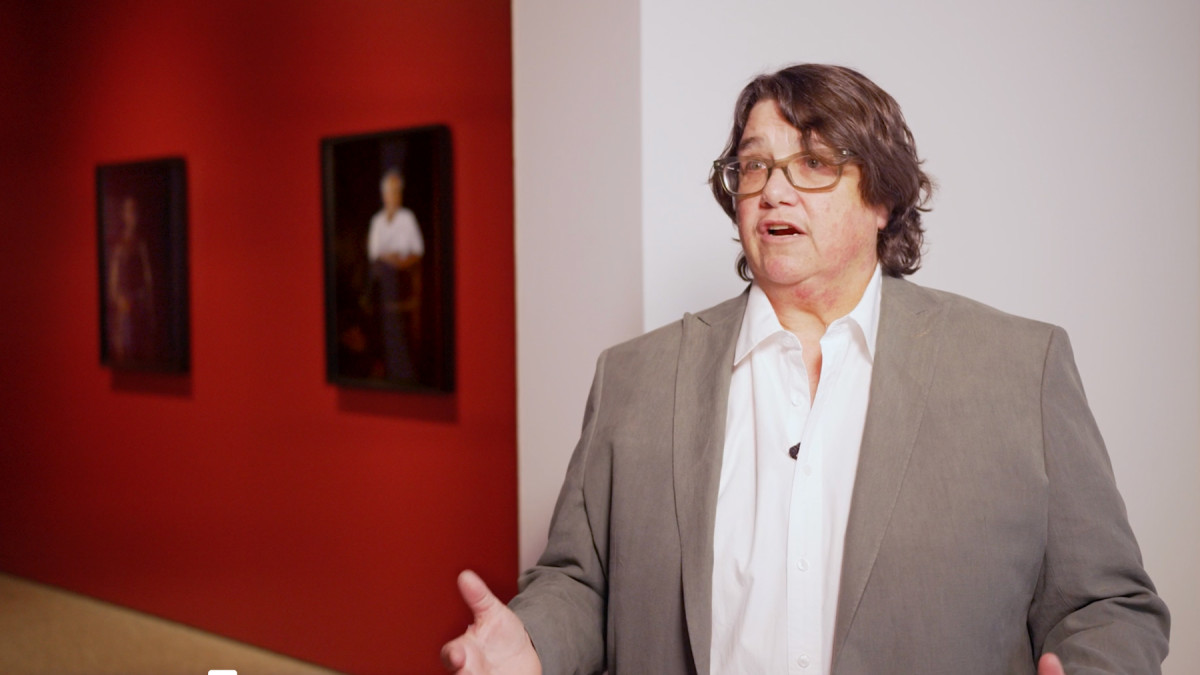Fedex® Large Kraft Box 2004 FEDEX 155143 REV 10/04 SSCC, International Priority, Los Angeles-Beijing trk#875468976062, September 9-14, 2011, International Priority, Bejing-London trk#874594463978, March 13-15, 2012, International Priority, London-San Francisco, trk#777001529227, August 16-18, 2016, International Priority, San Francisco-Beijing, trk# 775046700145, October 27-November 5, 2021
2011 - Sculpture (Sculpture)
23.62 x 18.11 x 18.11 inches (60 x 46 x 46 cm)
Walead Beshty
Constructed out of metal or glass to mirror the size of FedEx shipping boxes, and to fit securely inside, Walead Beshty’s FedEx works are then shipped, accruing cracks, chips, scrapes, and bruises along the way to their destination. Displayed with the cardboard boxes (and their shipping labels, which chart the journey in a different way) that contain them during the journey, these damaged forms draw from minimalist sculpture, and conceptual artworks that focused on distance, travel, and virtual connections.
Artist and writer Walead Beshty examines the processes of his own multidisciplinary (though primarily photographic) work’s production, linking these processes to global issues including human migration,displacement, and technology. His works, oftentimes visually abstracted, argue for their own production as a process of transformation, emphasizing an expansive array of actions and methods through which art can be structurally transformed or produced. In this way, by examining the matrix of production surrounding his individual artworks, Beshty’s introspection also expands outward onto a complex field of vectors connecting actions, subjects, structures, and forms. Beshty explores the limitations and possibilities of his mediums, which include photography, light, metal, glass, cardboard, and, often, distance. Often striking in their visual presence, his work reflects the movement of images and objects, both in a literal sense and in terms of the way that ideas and materials are circulated and exchanged. They also convey another narrative: the history and the processes that construct both the world and his art.
Colors:
Other related works, blended automatically

© » KADIST
Walead Beshty
2012Constructed out of metal or glass to mirror the size of FedEx shipping boxes, and to fit securely inside, Walead Beshty’s FedEx works are then shipped, accruing cracks, chips, scrapes, and bruises along the way to their destination...

© » KADIST
Luisa Lambri
2007Rudolph Schindler’s designs, part of a practice he called “Space Architecture,” marry interior with exterior and space with light...

© » KADIST
Wolfgang Tillmans
2017Wolfgang Tillmans initiated the ongoing series Faltenwurf in 1989, representing compositions of unused clothing, with special attention paid to the ways in which they drape and fold...

© » KADIST
Hank Willis Thomas
2012Bread and Roses takes its name from a phrase famously used on picket signs and immortalized by the poet James Oppenheim in 1911...

© » KADIST
Pascal Shirley
2006Like many of Pascal Shirley’s photographs, Oakland Girls aestheticizes a dingy rooftop and a cloudy sky...

© » KADIST
Du Zhenjun
2010The Tower of Babel is an installation of large-format photographs that forces the audience to occupy a central position through its monumental scale...

© » KADIST
Gimhongsok
2007To explore the boundaries between artwork and audience, Gimhongsok created a series of sculptural performances in which a person wearing an animal costume poses in the gallery...

© » ROYAL ACADEMY
Catherine Opie
Video: Catherine Opie on photographing leading British artists | Blog | Royal Academy of Arts Catherine Opie in the RA Collection Gallery Video: Catherine Opie on photographing leading British artists Read more Become a Friend Video: Catherine Opie on photographing leading British artists Published 8 September 2023 Catherine Opie discusses her portraits of David Hockney, Anish Kapoor, Gillian Wearing, Isaac Julien and Lynette Yiadom-Boakye, featured in our free display in the Collection Gallery...

© » KADIST
Sharon Lockhart
2008Lockhart’s film Lunch Break investigates the present state of American labor, through a close look at the everyday life of the workers at the Bath Iron Works shipyard—a private sector of the U...

© » KADIST
Hank Willis Thomas
2012Like many of his other sculptural works, the source of I am the Greatest is actually a historical photograph of an identical button pin from the 1960s...

© » KADIST
Hank Willis Thomas
2014Shot in black and white and printed on a glittery carborundum surface, Black Hands, White Cotton both confronts and abstracts the subject of its title...

© » APERTURE
An-My LE
For the past two decades, An-My Lê has used photography to examine her personal history and the legacies of US military power, probing the tension between experience and storytelling....

© » KADIST
Catherine Opie
1987In this work, a woman sits on a couch with her shirt pulled up to expose her pierced nipples, which are connected by a chain...

© » KADIST
Hank Willis Thomas
2012Thomas’ lenticular text-based works require viewers to shift positions as they view them in order to fully absorb their content...

© » KADIST
An-My LE
2010The print Patient Admission, US Naval Hospital Ship Mercy, Vietnam (2010) features an Asian Buddhist monk and an American Navy Solider on board the Mercy ship –one of the two dedicated hospital ships of the United States Navy– sitting upright in their chairs and adopting the same posture...

© » KADIST
Yto Barrada
2004In this photographic series, Yto Barrada was interested in the logos of the buses that travel between North Africa and Europe...

© » KADIST
Piero Golia
2007Golia’s Untitled 3 is an installation in which a mechanical device is programmed to shoot clay pigeons that are thrown up in front of a white wall...

© » KADIST
Lisa Oppenheim
2003The Damaged series by Lisa Oppenheim takes a series of selected photographs from the Chicago Daily News (1902 – 1933) as its source material...


